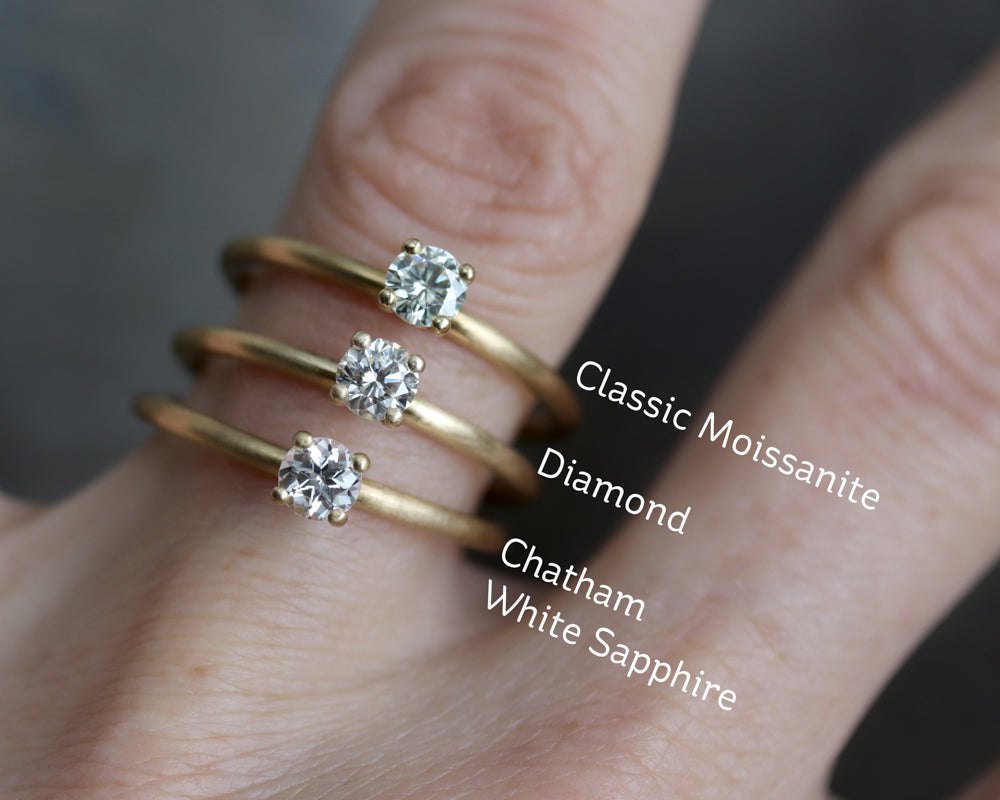In the ever-evolving landscape of engagement rings, lab grown diamonds have emerged as a revolutionary option for couples seeking the perfect symbol of their commitment. Gone are the days when natural diamonds were the sole choice for expressing eternal love. Now, let’s dive into the sparkling world of lab-grown diamond engagement rings, exploring their benefits, quality, design options, buying guide, and much more!
Introduction to Lab Grown Diamonds
What are lab grown diamonds? Lab grown diamonds, also known as synthetic or cultured diamonds, are created in controlled environments that replicate the natural lab grown diamonds process. These diamonds possess the same chemical composition, physical properties, and visual appeal as natural diamonds but are produced in a fraction of the time.
How are they created? Lab-grown diamonds are formed through either High Pressure-High Temperature (HPHT) or Chemical Vapor Deposition (CVD) methods. In HPHT, carbon atoms are subjected to intense pressure and heat, mimicking the conditions deep within the Earth’s mantle where natural diamonds are formed. Alternatively, CVD involves the deposition of carbon atoms onto a substrate, gradually building up the diamond crystal lattice.
Benefits of Lab Grown Diamond Engagement Rings
Cost-effectiveness One of the most significant advantages of lab-grown diamond engagement rings is their affordability. Compared to natural diamonds, which require extensive mining and processing, lab-grown diamonds are more cost-effective to produce, resulting in lower prices for consumers without compromising on quality or beauty.
Ethical considerations Unlike natural diamonds, which may be associated with unethical mining practices and human rights abuses, lab grown diamonds offer a clear conscience to conscientious consumers. By opting for lab-grown diamonds, couples can ensure that their symbol of love is free from the taint of exploitation and conflict.
Environmental impact The eco-conscious choice, lab-grown diamond engagement rings have a significantly lower environmental footprint compared to their natural counterparts. With minimal land disturbance, reduced energy consumption, and no contribution to deforestation or habitat destruction, lab-grown diamonds pave the way for a more sustainable and environmentally friendly jewelry industry.
Quality and Durability
Comparing lab-grown and natural diamonds In terms of quality and durability, lab-grown diamonds are virtually indistinguishable from natural diamonds. Both types exhibit the same brilliance, fire, and hardness, making them equally suitable for everyday wear as symbols of enduring love. Additionally, lab-grown diamonds undergo the same rigorous grading and certification processes as natural diamonds, ensuring their authenticity and value.
Certification and standards When purchasing a lab grown diamond engagement ring, it’s essential to choose a reputable retailer that provides certification from recognized gemological laboratories. These certifications verify the authenticity and quality of the diamond, giving buyers peace of mind and assurance in their investment.
Design Options
Customization possibilities One of the joys of choosing a lab-grown diamond engagement ring is the endless array of customization options available. From classic solitaire settings to intricate halo designs, couples can collaborate with jewelers to create a ring that perfectly reflects their unique style and personality, ensuring a one-of-a-kind symbol of their love.
Popular styles and settings In addition to traditional diamond cuts like round, princess, and emerald, lab-grown diamond engagement rings offer a wide range of trendy and contemporary styles to suit every taste. From vintage-inspired designs to sleek modern settings, there’s a perfect ring waiting to capture your heart.
Buying Guide
Factors to consider When shopping for a lab-grown diamond engagement ring, several factors should be taken into account, including the Four Cs: cut, color, clarity, and carat weight. Additionally, consider your budget, preferred ring style, and desired level of customization to narrow down your options and find the perfect ring for your beloved.
Where to purchase With the growing popularity of lab-grown diamonds, many reputable jewelers and online retailers now offer a wide selection of lab-grown diamond engagement rings. Be sure to research and compare prices, reviews, and return policies before making your purchase to ensure a smooth and satisfactory buying experience.
Caring for Lab Grown Diamond Rings
Cleaning and maintenance tips To keep your lab-grown diamond engagement ring looking its best, regular cleaning and maintenance are essential. Use a soft brush and mild detergent to gently scrub away dirt and grime, and avoid harsh chemicals and abrasive cleaners that can damage the diamond or its setting. Additionally, consider periodic professional cleanings and inspections to ensure the longevity and beauty of your ring.
Longevity and wearability With proper care and maintenance, lab-grown diamond engagement rings are designed to last a lifetime, just like their natural counterparts. Their exceptional hardness and durability make them resistant to scratching, chipping, and fading, ensuring that your symbol of love remains as brilliant and beautiful as the day you first slipped it onto your finger.
Consumer Perception and Trends
Shifting attitudes towards lab grown diamonds As awareness of the ethical and environmental issues surrounding natural diamond mining grows, more couples are turning to lab-grown diamonds as a socially responsible alternative. With their affordable prices, superior quality, and sustainable origins, lab-grown diamond engagement rings are becoming increasingly popular choices for modern couples seeking to make a positive impact with their purchase.
Market growth The market for lab-grown diamond engagement rings is experiencing rapid growth, driven by increasing consumer demand and advances in diamond-growing technology. As more jewelers and retailers embrace lab-grown diamonds and educate







